Food trends that must be stopped
From doctored dishes to cocktail flubs, a top critic sounds off on the 10 worst practices. One involves tap water
| International News Limited Domain Pricing Per Year |
| .com* $9.99 | .net* $9.99 | .org* $9.99 | .info* $9.99 | .us* $9.99 | .biz* $9.99 | .ws* $9.99 | .name* $9.99 |
| Save even more on multi-year registrations! |

A Mexican woman has been arrested for trying to sneak her husband out of prison in a suitcase. Particularly bulky

New powers will mean cops in one state can demand the removal of burqas and other veils to identify people. More
Police in the Australian state of New South Wales are to be allowed to demand the removal of burqas and other face veils so they can identify people.
The state government approved the move late Monday after the high-profile recent case of a Muslim woman being acquitted when a judge ruled she could not be positively identified because was wearing a burqa.
"I don't care whether a person is wearing a motorcycle helmet, a burqa, niqab, face veil or anything else, the police should be allowed to require those people to make their identification clear," Premier Barry O'Farrell said.
"I have every respect for various religions and beliefs but when it comes to enforcing the law the police should be given adequate powers to make a clear identification."
Anyone who refuses to show their face could be jailed for up to a year or fined Aus$5,500 ($5,900).
The move comes in the wake of a case in November when a woman was sentenced to six months jail for falsely accusing police of forcibly trying to remove her burqa when she was stopped for a traffic offence.
But her sentence was quashed last month when a magistrate said he could not be 100 percent sure it was the same woman who made the complaint because officers were not able to see the face of the accuser.
New South Wales state Police Commissioner Andrew Scipione demanded a clarification of the law and O'Farrell said the new powers should help prevent a recurrence of such issues.
Police previously had the power to ask women to remove face veils during the investigation of serious offences, but not on more routine matters.
The wearing of full-face niqab veils by some Muslim women has become a contentious issue in parts of Europe, where France has banned them in public.
In New Zealand, Prime Minister John Key on Tuesday said Muslim women wearing veils should not face discrimination, after two Saudis were reportedly ordered off buses due to their attire.
The Islamic Council of New South Wales said it accepted O'Farrell's decision.
"If you're asked to do something by a police officer and it's legitimate, then you do it," council chairman Khaled Sukkarieh told ABC radio.
The Muslim Women's Association said it would prefer that a female police officer was on hand when the veils were removed, but if that happened then "nobody could really complain".
The Police Association of New South Wales welcomed the move, saying it was a loophole that had to be closed.
"It will provide clarity and certainty for both the public and for police officers," the union's acting president Pat Gooley said in a statement.
While Queensland state said it would not go down the same path, Western Australia indicated it may follow suit with the state's police minister meeting the police commissioner on the issue Tuesday.
"I'm concerned at the idea of police not having the power to request drivers to remove helmets or other face coverings for ID purposes at the roadside," WA Police Minister Rob Johnson said.

From doctored dishes to cocktail flubs, a top critic sounds off on the 10 worst practices. One involves tap water
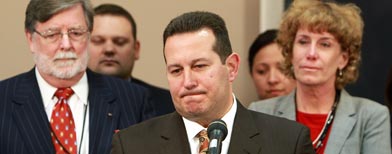
Defense attorney Jose Baez was criticized for his strategy, but the burden of proof wasn't on him. Weaknesses
Police in the Australian state of New South Wales are to be allowed to demand the removal of burqas and other face veils so they can identify people.
The state government approved the move late Monday after the high-profile recent case of a Muslim woman being acquitted when a judge ruled she could not be positively identified because was wearing a burqa.
"I don't care whether a person is wearing a motorcycle helmet, a burqa, niqab, face veil or anything else, the police should be allowed to require those people to make their identification clear," Premier Barry O'Farrell said.
"I have every respect for various religions and beliefs but when it comes to enforcing the law the police should be given adequate powers to make a clear identification."
Anyone who refuses to show their face could be jailed for up to a year or fined Aus$5,500 ($5,900).
The move comes in the wake of a case in November when a woman was sentenced to six months jail for falsely accusing police of forcibly trying to remove her burqa when she was stopped for a traffic offence.
But her sentence was quashed last month when a magistrate said he could not be 100 percent sure it was the same woman who made the complaint because officers were not able to see the face of the accuser.
New South Wales state Police Commissioner Andrew Scipione demanded a clarification of the law and O'Farrell said the new powers should help prevent a recurrence of such issues.
Police previously had the power to ask women to remove face veils during the investigation of serious offences, but not on more routine matters.
The wearing of full-face niqab veils by some Muslim women has become a contentious issue in parts of Europe, where France has banned them in public.
In New Zealand, Prime Minister John Key on Tuesday said Muslim women wearing veils should not face discrimination, after two Saudis were reportedly ordered off buses due to their attire.
The Islamic Council of New South Wales said it accepted O'Farrell's decision.
"If you're asked to do something by a police officer and it's legitimate, then you do it," council chairman Khaled Sukkarieh told ABC radio.
The Muslim Women's Association said it would prefer that a female police officer was on hand when the veils were removed, but if that happened then "nobody could really complain".
The Police Association of New South Wales welcomed the move, saying it was a loophole that had to be closed.
"It will provide clarity and certainty for both the public and for police officers," the union's acting president Pat Gooley said in a statement.
While Queensland state said it would not go down the same path, Western Australia indicated it may follow suit with the state's police minister meeting the police commissioner on the issue Tuesday.
"I'm concerned at the idea of police not having the power to request drivers to remove helmets or other face coverings for ID purposes at the roadside," WA Police Minister Rob Johnson said.
The Great American Novel The Film _Music ClipTwo
updated 01:55 am
 Latest omg! celebrity snaps
Latest omg! celebrity snaps  Check out all the latest showbiz news, gossip and photos on omg!
Check out all the latest showbiz news, gossip and photos on omg!  Who's snogging who in celebville?
Who's snogging who in celebville?

Focusing on nothing more than the bottom line means banks are causing huge problems.
My son ran up an unauthorised overdraft a couple of years ago - or, rather, he inadvertently exceeded his agreed overdraft limit by £200.
The bank slammed some usurious penalty charges on his account and the sum he owed soon multiplied to a figure that he couldn't possibly afford to repay. He tried to talk to the bank about repaying the original overdraft, plus appropriate interest, but it ignored him.
So instead he waited for the High Court ruling on whether banks should be allowed to charge whatever they like on unauthorised borrowing, hoping it would solve his problems. But it went against him - and many other thousands in the same boat. Meanwhile, the sum had escalated wildly into a four-figure debt.
His bank is our old friend Barclays, which is fast becoming the Ryanair of British banking when it comes to customer service - although I gather all the banks are at it.
No co-operation
Now, I accept that customers, like my son, who run up debts have only themselves to blame - it's all in the small print, blah, blah, blah. But my point is that he wanted to repay the original sum and tried to do so. The bank could have had its money back, if it had co-operated.
Instead, it has invented a ludicrous debt that it has no hope of seeing repaid.
More extraordinarily, Barclays sold the debt on to a credit agency some time ago. What is Kafka-esque in its absurdity here is that, in doing so, the bank has made an entirely notional sum of money into a real one. This debt never existed, other than in the fevered imagination of some clerks in the Bank of Lilliput.
By capitalising it and selling it on, this invented money has become commoditised. And there must be loads of it out there. I fully expect some wünderkind of the financial markets to securitise all this bogus debt and flog it to a US bank to fuel the next sub-prime housing boom.
Anyway, this means for us that a series of entertaining credit agents periodically phone up. The names of the agencies change weekly, as the debt is passed around the market, like the plate of cocktail sausages that no one wants at a party.
One spiv told my son that he'd knock 25% off the debt if he paid it off by credit card over the phone immediately. Unsurprisingly, he resisted this temptation, as there would have been no record of the agreement.
[See also: Man gets 'unfair' £20,000 credit card debt written off]
Financial charlatans
I fear that there may be some borrowers who do deal with these charlatans of the financial world. After all, they threaten that they're about to come round to your house and impound everything from your clothes to your pets in order to settle the debt.
This is nonsense. The Citizens Advice Bureau advises that under no circumstances should anyone ever respond to a telephone approach from a credit agent. That seems like sound advice.
But there are other factors at play too. These debt collectors phone and, first of all, ask you to identify who you are and where you live. Excuse me, do they really think we're that dumb? No one has the right to phone and demand information about you.
These giants of credit control, however, are evidently a few beads short of a full abacus. One phoned the other day. Apparently, they couldn't speak to me unless I identified myself. Fine by me.
A firm called RMA Partners, for example, told me I had to provide personal information for security purposes. I had to prove that I was who I said I was. I asked him to identify himself and to prove he was from the company he said he was, otherwise I couldn't deal with him "for security reasons".
There was silence at the other end. It was like a fuse had blown in his head. I wished him well and gently hung up.
But the problem is that the high street banks allow these agents to operate under the banks' brand names. I have had people on the line claiming that they are from Barclays. They are rude, aggressive and unprofessional.
Credit is really the issue. Does a bank like Barclays really think that these ethic-free operations do its brand and reputation any credit? But, then again, perhaps brand values and reputation have long since ceased to be a valid currency for our banks.
Reverend George Pitcher is a former industrial editor of the Observer. He is the Archbishop of Canterbury's secretary for public affairs and curate at St Bride's, Fleet Street.

An expert on aging thinks doctors could have all the tools they need to "cure" getting old. Hotly debated subject
LONDON (Reuters) - If Aubrey de Grey's predictions are right, the first person who will live to see their 150th birthday has already been born. And the first person to live for 1,000 years could be less than 20 years younger.
A biomedical gerontologist and chief scientist of a foundation dedicated to longevity research, de Grey reckons that within his own lifetime doctors could have all the tools they need to "cure" aging -- banishing diseases that come with it and extending life indefinitely.
"I'd say we have a 50/50 chance of bringing aging under what I'd call a decisive level of medical control within the next 25 years or so," de Grey said in an interview before delivering a lecture at Britain's Royal Institution academy of science.
"And what I mean by decisive is the same sort of medical control that we have over most infectious diseases today."
De Grey sees a time when people will go to their doctors for regular "maintenance," which by then will include gene therapies, stem cell therapies, immune stimulation and a range of other advanced medical techniques to keep them in good shape.
De Grey lives near Cambridge University where he won his doctorate in 2000 and is chief scientific officer of the non-profit California-based SENS (Strategies for Engineered Negligible Senescence) Foundation, which he co-founded in 2009.
He describes aging as the lifelong accumulation of various types of molecular and cellular damage throughout the body.
"The idea is to engage in what you might call preventative geriatrics, where you go in to periodically repair that molecular and cellular damage before it gets to the level of abundance that ispathogenic," he explained.
CHALLENGE
Exactly how far and how fast life expectancy will increase in the future is a subject of some debate, but the trend is clear. An average of three months is being added to life expectancy every year at the moment and experts estimate there could be a million centenarians across the world by 2030.
To date, the world's longest-living person on record lived to 122 and in Japan alone there were more than 44,000 centenarians in 2010.
Some researchers say, however, that the trend toward longer lifespan may falter due to an epidemic of obesity now spilling over from rich nations into the developing world.
De Grey's ideas may seem far-fetched, but $20,000 offered in 2005 by the Massachusetts Institute of Technology (MIT) Technology Review journal for any molecular biologist who showed that de Grey's SENS theory was "so wrong that it was unworthy of learned debate" was never won.
The judges on that panel were prompted into action by an angry put-down of de Grey from a group of nine leading scientists who dismissed his work as "pseudo science."
They concluded that this label was not fair, arguing instead that SENS "exists in a middle ground of yet-to-be-tested ideas that some people may find intriguing but which others are free to doubt."
CELL THERAPY
For some, the prospect of living for hundreds of years is not particularly attractive, either, as it conjures up an image of generations of sick, weak old people and societies increasingly less able to cope.
But de Grey says that's not what he's working for. Keeping the killer diseases of old age at bay is the primary focus.
"This is absolutely not a matter of keeping people alive in a bad state of health," he told Reuters. "This is about preventing people from getting sick as a result of old age. The particular therapies that we are working on will only deliver long life as a side effect of delivering better health."
De Grey divides the damage caused by aging into seven main categories for which repair techniques need to be developed if his prediction for continual maintenance is to come true.
He notes that while for some categories, the science is still in its earliest stages, there are others where it's already almost there.
"Stem cell therapy is a big part of this. It's designed to reverse one type of damage, namely the loss of cells when cells die and are not automatically replaced, and it's already in clinical trials (in humans)," he said.
Stem cell therapies are currently being trialed in people with spinal cord injuries, and de Grey and others say they may one day be used to find ways to repair disease-damaged brains and hearts.
NO AGE LIMIT
Cardiovascular diseases are the world's biggest age-related killers and de Grey says there is a long way to go on these though researchers have figured out the path to follow.
Heart diseases that cause heart failure, heart attacks and strokes are brought about by the accumulation of certain types of what de Grey calls "molecular garbage" -- byproducts of the body's metabolic processes -- which our bodies are not able to break down or excrete.
"The garbage accumulates inside the cell, and eventually it gets in the way of the cell's workings," he said.
De Grey is working with colleagues in the United States to identify enzymes in other species that can break down the garbage and clean out the cells -- and the aim then is to devise genetic therapies to give this capability to humans.
"If we could do that in the case of certain modified forms of cholesterol which accumulate in cells of the artery wall, then we simply would not get cardiovascular disease," he said.
De Grey is reluctant to make firm predictions about how long people will be able to live in future, but he does say that with each major advance in longevity, scientists will buy more time to make yet more scientific progress.
In his view, this means that the first person who will live to 1,000 is likely to be born less than 20 years after the first person to reach 150.
"I call it longevity escape velocity -- where we have a sufficiently comprehensive panel of therapies to enable us to push back the ill health of old age faster than time is passing. And that way, we buy ourselves enough time to develop more therapies further as time goes on," he said.
"What we can actually predict in terms of how long people will live is absolutely nothing, because it will be determined by the risk of death from other causes like accidents," he said.
"But there really shouldn't be any limit imposed by how long ago you were born. The whole point of maintenance is that it works indefinitely."

The "ballerina chop" works your abs, thighs, and rear end -- all in one simple exercise. Try the 'tummy tucker,' too

The singer debuts two-tone hair, but her workout getup is even more of a head-turner. Scary, spikey heels
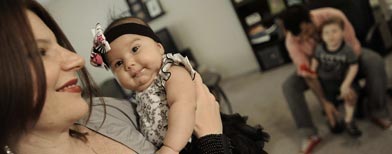
Having a baby outside of a hospital is no longer "a hippie thing," but doctors have concerns. Who's staying home

A portion of the season could be lost if owners and players don't come to an agreement soon. The 'drop-dead' date

An elaborate home cinema in Florida sports lavish seating on top of a pirate deck. See the entire setup

Atlantis's final launch marks the end of a program that was costly in more ways than one. Spectacular success, failures

Begin by dropping the worst rule in baseball — and stop running it like Little League, a writer says. HR Derby tweak

Strong, gusty winds mess up the singer's stylish tresses at a Fourth of July concert. Watch the video

Cities too often use the systems as just another way to generate revenue, say critics. Backlash gaining steam

A man's idle camera becomes more than a toy for one enterprising animal.Fascinated by reflection
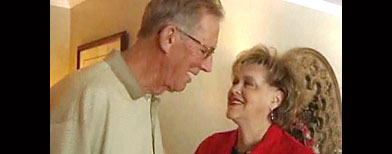
Dianne Kidd was 14 when she flushed her sweetheart's keepsake down the toilet by mistake. Where it ended up

Some are easy to access, but this dazzling rock formation in Arizona requires special effort. How to visit it

Jamie Foxx will play a freed slave trying to recover his wife in Quentin Tarantino's new film. Who turned the part down

The Colorado River beach in the Grand Canyon makes for an unforgettable summer destination. More top picks

Arizona's Darnell Dockett is the latest in string of athletes to bring home an unusual animal friend. Meet 'Nino'

North America's lowest temperature doesn't come close to the record spot.How frigid it gets on other planets

A joyful Thomas Levet jumps in a lake to celebrate his win at the French Open.Why he may regret it
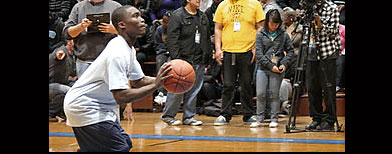
Allen Geui wins $40,000 in a free-throw shooting contest, but doesn’t keep a dime for himself. Tear-jerking gesture

The hot-dog-eating champ has a plan to counteract the effects of downing 20,000 calories in one day. Food that helps
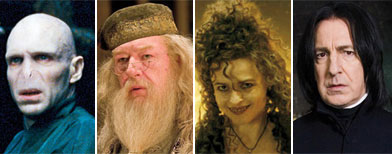
Helena Bonham Carter captured the heart of a major ‘80s star on a hit TV show. Actor who dated 2 castmates

Jennifer Aniston just got new ink but made one big mistake, says an expert.How 'Twilight' star did it right

British PM David Cameron is sickened by claims against tabloid News of the World. Private eye apologizes

After withdrawing from his third straight event, Tiger should take the rest of 2011 off. Writer: His game in major trouble

A figure shrouded in mystery emerges in the death of the most-wanted terrorist.In room, but not in famous photo

She earned an estimated $30 million last year, but so did another surprise actress. Bullock's big drop

Kids at basketball camp have no trouble spotting Atlanta's Joe Johnson in his glowing, massive ride. See it

Everyone knows to avoid fries with a burger, but one chain's baked potato is dangerous too. One side: 1,400 calories

Verizon is joining AT&T and T-Mobile in putting monthly limits on data usage.How much you really need

The No. 1 college major is also popular with employers that are looking for job candidates. Six potential careers

One state known for stunning vistas, zero income tax, and a 4% sales tax leads the list. Florida isn't in top 5

The verdict surprises legal analysts and spares the 25-year-old from facing the death penalty. Guilty of misdemeanors
Innocence Project
40 Worth St., Suite 701
New York, NY 10013
info@innocenceproject.org
212.364.5340
To submit a case to the Innocence Project
http://www.innocenceproject.org/know/conviction/About-Kenny-Waters.php
http://www.innocenceproject.org/know/conviction/About-Betty-Anne-Waters.php
http://www.innocenceproject.org/know/non-dna-exonerations.php
As
the pace of DNA exonerations has grown across the country in recent
years, wrongful convictions have revealed disturbing fissures and trends
in our criminal justice system. Together, these cases show us how the
criminal justice system is broken – and how urgently it needs to be
fixed.
We should learn from the system’s failures. In each case
where DNA has proven innocence beyond doubt, an overlapping array of
causes has emerged – from mistakes to misconduct to factors of race and
class.
Countless cases
Those exonerated by
DNA testing aren’t the only people who have been wrongfully convicted in
recent decades. For every case that involves DNA, there are thousands
that do not.
Only a fraction of criminal cases involve biological
evidence that can be subjected to DNA testing, and even when such
evidence exists, it is often lost or destroyed after a conviction. Since
they don’t have access to a definitive test like DNA, many wrongfully
convicted people have a slim chance of ever proving their innocence.
Common Causes
Here you will find further information about seven of the most common causes of wrongful convictions:
These
factors are not the only causes of wrongful conviction. Each case is
unique and many include a combination of the above issues. Review our
case profiles to learn how the common causes of wrongful convictions
have affected real cases and how these injustices could have been
prevented.
To stop these wrongful convictions from continuing, we must fix the criminal justice system. Click here to learn about Innocence Commissions,
a reform that can help identify and address the fundamental flaws in
the criminal justice system that lead to wrongful convictions.
The chart below represents contributing causes confirmed through Innocence Project research. Actual numbers may be higher, and other causes of wrongful convictions include government misconduct and bad lawyering.

Click for previous examination of cases based on other criteria.
The Innocence Project is not equipped to handle case applications or
inquiries by email or over the phone. All case submissions and follow-up
correspondence will be handled by mail or overnight delivery services
only.
If you are seeking legal assistance, please read the following guidelines for submitting your case.
All
cases for consideration should be mailed (to the address above) with a
brief factual summary of the case, including the specific charges and
convictions and a list of the evidence used against the defendant. No
other documents should be submitted for initial review. The Innocence
Project is not equipped to handle telephone or electronic (email)
applications.
The Innocence Project only accepts cases on
post-conviction appeal in which DNA testing can prove innocence. If the
case does not involve biological evidence or DNA, visit the Other
Innocence Organizations page to see if there is a program in your area
that provides broader legal and investigative assistance.
Click here to join our online community by signing up for our e-mail newsletter.
| Kenny Waters | ||
 |
Incident Date: 5/21/80 Jurisdiction: MA Charge: Murder, Robbery Conviction: Murder, Robbery Sentence: Life |
Year of Conviction: 1983 Exoneration Date: 6/19/01 Sentence Served: 18 Years Real perpetrator found? Not Yet Contributing Causes: Informants/Snitches Compensation? Yes |
The Innocence Project provides pro bono legal representation on behalf of people seeking to prove their innocence post-conviction. Since its inception in 1992, the Innocence Project has only taken cases where DNA testing can prove innocence. For more on our criteria for taking cases and the process for submitting a case for consideration, click here.
In some rare circumstances, however, the Innocence Project has helped exonerate clients through evidence other than DNA testing. We often have to close cases because the biological evidence is missing or destroyed, making DNA testing impossible. In some of those cases, strong evidence of innocence is discovered during the search for biological evidence, and we are able to secure our clients' freedom without DNA testing. In other cases, DNA test results alone are not enough to free our clients, but can help exonerate people when coupled with other evidence of innocence. In all of these cases, new evidence of innocence resulted in our clients' convictions being vacated and indictments against them being dismissed, fully exonerating them.
These cases underscore a critical point: DNA testing alone cannot overturn most wrongful convictions. In fact, experts estimate that DNA testing is possible in just 5-10% of all criminal cases. That is why a growing number of organizations in the Innocence Network handle cases regardless of whether DNA testing is possible. For a directory of these organizations, click here.
Below is a list of five Innocence Project cases, with links to full profiles, in which clients were exonerated through evidence other than DNA testing.
| Ralph Armstrong | ||
|
Incident Date: 09/02/1984 Jurisdiction: WI Charge: First-degree murder, first-degree sexual assault Conviction:First-degree murder, first-degree sexual assault Sentence: Life plus 16 years |
Conviction Date: 03/24/81 Exoneration Date: 08/19/09 Sentence Served: 25.5 Years Real perpetrator found?No Contributing Causes: Government Misconduct, Eyewitness Misidentification, Unvalidated or Improper Forensic Science Compensation? Not Yet |
|
| Levon Brooks | ||
 |
Incident Date: 9/15/90 Jurisdiction: MS Charge:Capital Murder, Sexual Battery Conviction:Capital Murder, Sexual Battery r Sentence: Life |
Conviction Date: 1/20/92 Exoneration Date:03/13/2008 Sentence Served:16 Years Real perpetrator found?Yes Contributing Causes: Government Misconduct, Unvalidated or Improper Forensic Science Compensation? Not Yet |
| Barry Gibbs | ||
 |
Incident Date: 11/04/86 Jurisdiction: NY Charge: Second-degree murder Conviction:Second-degree murder Sentence: 25 Years to Life |
Conviction Date: 03/25/88 Exoneration Date:9/29/05 Sentence Served:17.5 Years Real perpetrator found?No Contributing Causes: Government Misconduct, Eyewitness Misidentification, Informant / Snitch Compensation? Yes |
| Paul House | ||
 |
Incident Date: 7/13/1985 Jurisdiction: TN Charge: First-degree murder Conviction:First-degree murder Sentence: Death |
Year of Conviction: 1986 Exoneration Date:05/12/099 Sentence Served: 22 Years Real perpetrator found?No Contributing Causes: Unreliable/Limited Science, Forensic Science Misconduct, Bad Lawyering Compensation? Not Yet |
| Walter Swift | ||
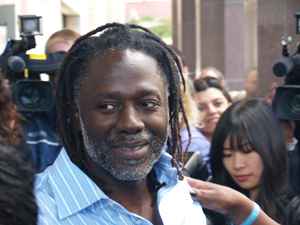 |
Incident Date: 09/02/1984 Jurisdiction: MI Charge: 1st degree criminal sexual conduct, robbery Conviction:1st degree criminal sexual conduct, robbery Sentence: 20-40 Years |
Conviction Date: 11/10/82 Exoneration Date: 5/21/08 Sentence Served: 25.5 Years Real perpetrator found?No Contributing Causes: Eyewitness Misidentification, Unvalidated or Improper Forensic Science, Government Misconduct, Bad Lawyering Compensation? Not Yet |
 The
Innocence Project, the Mid-Atlantic Innocence Project and Hogan Lovells
US LLP is filing legal papers before the Virginia Court of Appeals
today asking the court to exonerate a Richmond man who has been
incarcerated nearly 27 years for three rapes that DNA and other evidence
now show were committed by the notorious “Black Ninja” rapist. After
an extensive investigation that included DNA testing, an exhaustive
review of the evidence and polygraph tests, Richmond Commonwealth’s
Attorney Michael Herring and Henrico Commonwealth’s Attorney Wade Kizer
are both calling for Mr. Haynesworth’s exoneration and return to
freedom. Virginia Attorney General Ken Cuccinelli has also announced
that he is supporting the writ seeking a declaration of innocence.
The
Innocence Project, the Mid-Atlantic Innocence Project and Hogan Lovells
US LLP is filing legal papers before the Virginia Court of Appeals
today asking the court to exonerate a Richmond man who has been
incarcerated nearly 27 years for three rapes that DNA and other evidence
now show were committed by the notorious “Black Ninja” rapist. After
an extensive investigation that included DNA testing, an exhaustive
review of the evidence and polygraph tests, Richmond Commonwealth’s
Attorney Michael Herring and Henrico Commonwealth’s Attorney Wade Kizer
are both calling for Mr. Haynesworth’s exoneration and return to
freedom. Virginia Attorney General Ken Cuccinelli has also announced
that he is supporting the writ seeking a declaration of innocence.• Davis committed his crimes either in the early morning or early evening.In the papers that will be filed today, Haynesworth asks the court to grant him a Nonbiological Writ of Actual Innocence. Even though his petition is supported by the Attorney General and both Commonwealth’s Attorneys now believe he is innocent, Haynesworth will likely remain incarcerated while the court decides the case. There are no mandatory deadlines for the court to reach a decision.
• Davis would generally approach his victims casually on the street and then force them to a secluded area.
• All of Davis’ victims were white females between 15 and 30. (According to U.S. Department of Justice data only 12% of forcible rapes are committed by perpetrators who rape women of other races. http://bjs.ojp.usdoj.gov/content/pub/ascii/SOO.TXT /)
• Davis robbed each of his victims, usually before sexually assaulting them.
• Davis typically engaged in the same sex acts with his victims.
• Davis was unusually talkative during his attacks.
• All of Davis’ attacks occurred in close proximity. The crimes that we now know he committed in the beginning of 1984 occurred within a five block radius of his then address on National Street in the East End of Richmond. Most of his later attacks occurred further west in the Fan District and the Museum District, consistent with the fact that he married and moved to Parham Road in Henrico. His wife worked at 2900 Kensington Avenue in Richmond, which is in the Fan District.
• Davis was armed during his attacks, usually with a knife. The attacker in the Henrico case used a gun but told his victim that he usually used a knife, and 36 hours later the attacker in the Richmond case matching the same description used a gun.